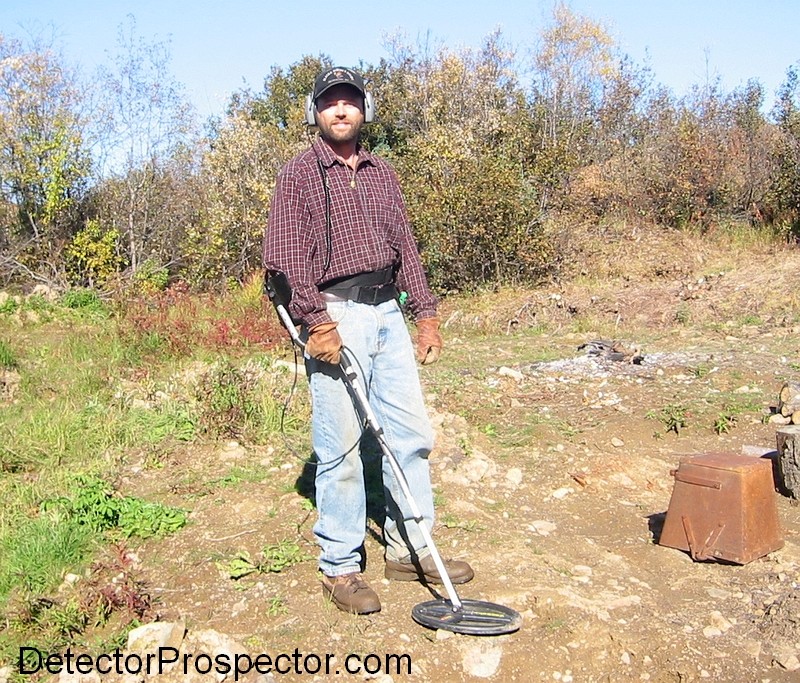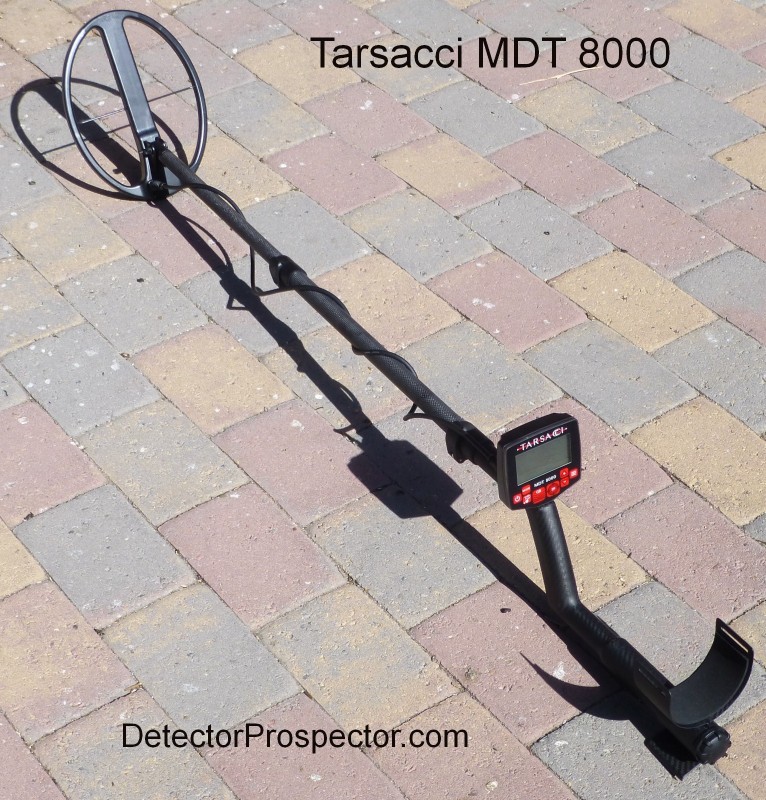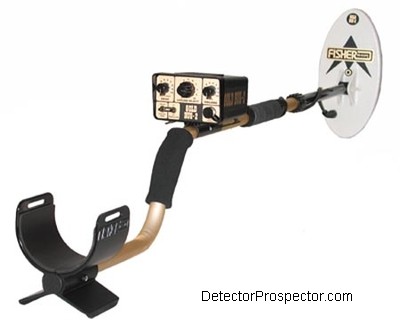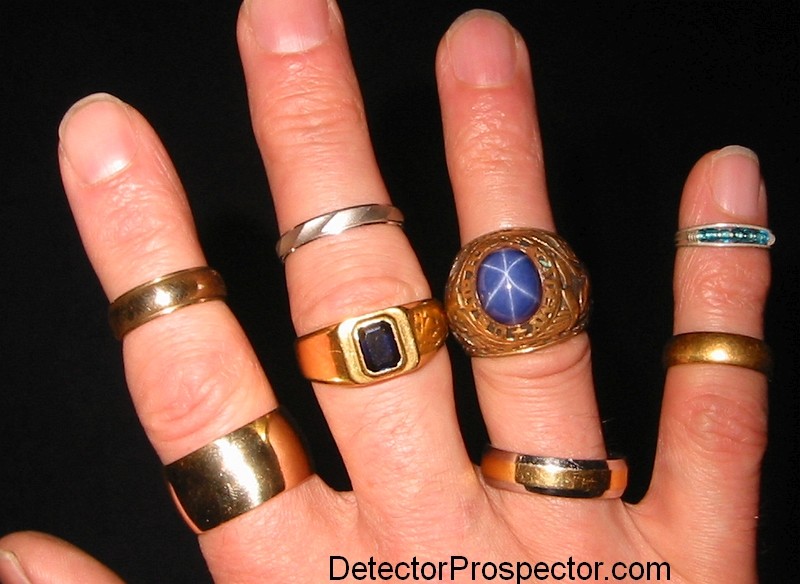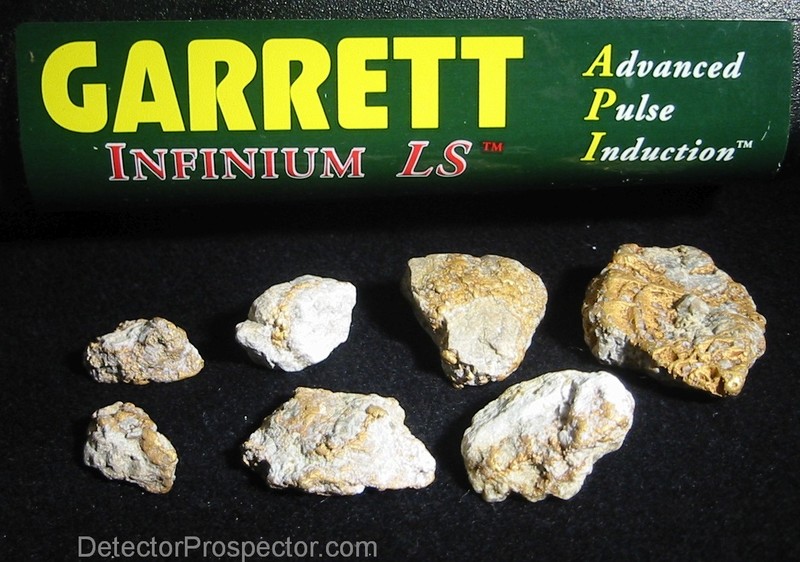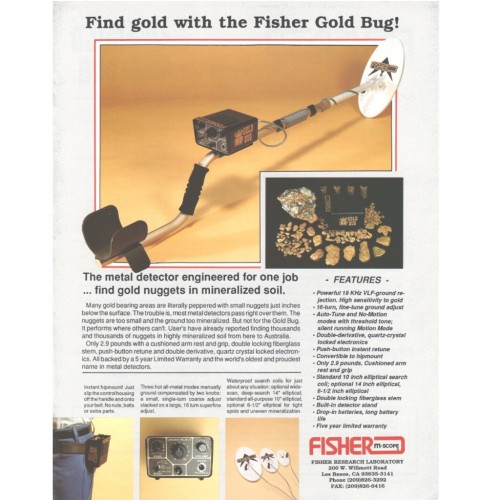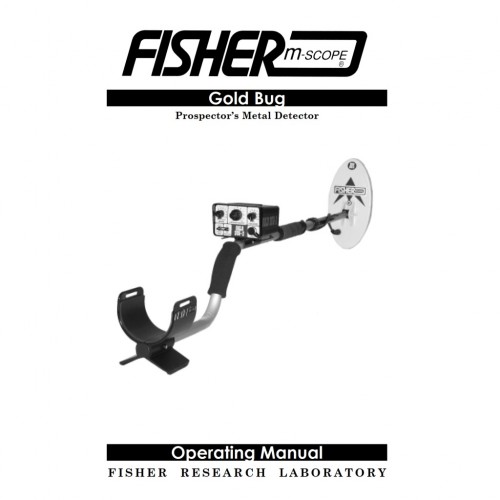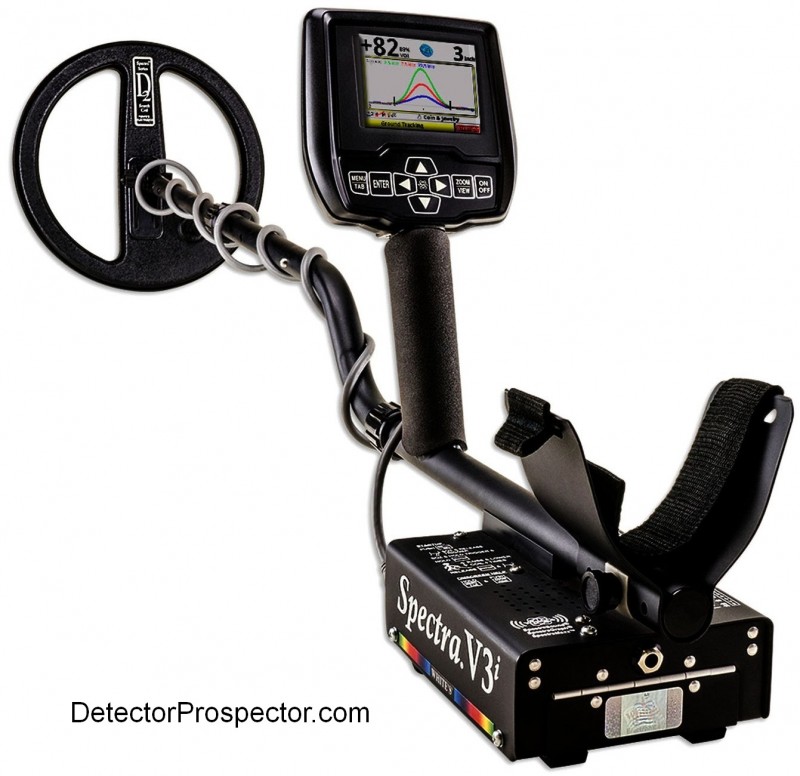-
Posts
19,800 -
Joined
Content Type
Forums
Detector Prospector Home
Detector Database
Downloads
Everything posted by Steve Herschbach
-
I wish the ATX circuit had been stuffed in the Infinium box instead. The Infinium had a lot to desire, especially the silly rod and mount setup, but it was still preferable to the overly heavy beast that ended up being the ATX. I know they could have gone either way at the time, and I was disappointed when they decided to use the Recon housing instead. I ran my Infinium hip mounted a lot - way better than seven ATX pounds on the arm!
-
Personally, I'd have to have the 15" coil for any beach larger than a postage stamp. Some places you can swing a coil forever and feel like no ground covered, so that extra coverage per sweep is great. Especially when finds are few and far between. The weight does not bother me though a counterweighted rod does help a lot. And if there is a depth advantage - bonus!
-

Hello & Detector Sales
Steve Herschbach replied to BGRIVER's topic in Metal Detector Advice & Comparisons
Kellyco is a very large and very old business, with average customer service. That means they make most people happy, but due to size snd volume you can also find plenty of people with complaints. They are rated A+ by the Better Business Bureau. None of which helps you. Between the pandemic and the holidays, things can get crazy, and a mistake was made. Best bet is to be patient, call them, and find a solution. You can generally count on them making good on their mistakes. -

Looking Forward To 2021!
Steve Herschbach replied to Tom Slick's topic in Metal Detector Advice & Comparisons
Scary stuff, I’m glad you pulled through, and that your family is fine. -

December Trip Report
Steve Herschbach replied to Alaskan_EOD's topic in Gold Panning, Sluicing, Dredging, Drywashing, Etc
Welcome to the forum - great story and photos! -
I have got up on my soapbox every year about this time to prognosticate about the coming year in metal detector technology. 2020 was an especially significant year as we lost another major player in the industry. A few years ago it was Tesoro going out of business. In 2020 we learned that White's is closing shop and being acquired by Garrett. It is unknown if Garrett will attempt to keep White's alive as a separate product line, or simply acquired the rights and technology to keep somebody else from doing so. At the moment it seems White's has gone away for good, but it is not impossible Garrett will revive the name in 2021. Whatever they decide will have a major influence on metal detecting in the future. But in the meantime we have fewer players now to speculate about. Garrett/White's - we just saw the release of the Ace Apex, a first foray into multifrequency by Garrett. The company already has a very well implemented wireless audio system, and the Apex is fully rechargeable. The White's acquisition means Garrett adds the V3i multi tech and TDI PI tech to their IP base, and this along with the half-sine patent means Garrett has a fresh shot of technology options to choose from. The White’s 24K is a superb product, now unavailable new. However, I expect an acquisition of this magnitude to take time and I'm not holding my breath on any really new product in 2021 from Garrett. At most perhaps a revival of some White's models, or releasing clones under the Garrett name. At the moment however I see Garrett as the U.S. company with the most potential for the longer term future, regardless of what happens in the near term. First Texas (Bounty Hunter, Fisher, Teknetics) - whereas Garrett seems to have a purpose, First Texas seems adrift these days. Most of the Fisher models on the website have been discontinued, or are decades old. Teknetics as a brand seems nearly dead, focused on factory direct sales. Basic advances like in-built rechargeable battery systems, wireless headphones, and over the internet updates - all go ignored at the company. The only news is a new line of pulse induction detectors, but as the lack of interest from users on the internet shows, most people are not screaming for First Texas to bring a PI to market. Everyone wants to hear about a major response to new machines like the Equinox, but so far it's crickets from First Texas. The final production Impulse AQ will hit the market in the first half of the year, but I expect it to have almost no impact on the overall detecting world, or even the beach detecting world for that matter. People will still choose VLF over PI for beach detecting by huge margins, so the Impulse AQ has a shot at being nothing more than a niche detector in a niche detecting market. The Gold version has potential to crack open the gold prospecting market that Minelab currently dominates, but it is going to have to have a very attractive price/performance ratio if it hopes to make Minelab users consider a new brand. For many gold prospectors Minelab currently is the only choice in detectors. Hopefully there is more going on at First Texas than PI, because they are sliding into irrelevance in high end VLF. It seems more models keep slipping into the Bounty Hunter lineup, and if nothing changes someday the Teknetics and even Fisher lines may be retired. Or the Fisher line could be boosted with new high end machines to become the high tech alternative to Bounty Hunter. That was the original plan buying this old name in detecting, and 2021 will probably determine what happens for the Fisher brand in the future. Revival... or the next slow death? Minelab - on a roll still, with the new GPX 6000 due out this spring. When it comes to cutting edge technology, Minelab remains the company to watch. There is no doubt a replacement for the CTX 3030 in the works, but there are no solid hints at when it may arrive. I am guessing 2022 since the last two rollouts were for coin detectors (Equinox and Vanquish). Minelab tends to address areas in a round robin fashion, and I believe 2021 will preferentially freshen the gold prospecting lineup. Nokta/Makro - the easy picking low hanging fruit of single frequency VLF has been fully exploited at Nokta/Makro, and it remains now to see if they can make the move up to higher tech product like simultaneous multifrequency and ground balancing pulse induction. The rapid pace of new product releases has stalled out as further advances will be more difficult. Historically NM has used their Christmas card to hint at new releases, and this year they took a pass on that. I'm hopeful for 2021 but certainly not holding my breath, as it may be fall at earliest before we hear more. Tarsacci - a new 12" coil for the MDT is in the works, and a possible change to the battery door design in future versions. XP - still largely a one-trick pony with the DEUS, and the ORX, which is really just a subset of the DEUS. Will we ever see multifrequency or PI from XP? All is quiet now with the news over ORX run it's course, and right now there are no hints of anything new from XP for 2021. Just random blatherings from an industry old-timer, worth every penny paid. I'm pretty well set for detectors these days, with only the grudge match between the Minelab GPX 6000 and Fisher Impulse Gold having any interest for me personally. I have to put my money on Minelab when it comes to cutting edge tech, but I do hope the Impulse Gold is good enough and low priced enough to shake things up.
-
This is my latest "Nugget Detector Guide", now published for over twenty years, updated January 2024 with some of the latest model information. Each model has a short description, followed by a very PERSONAL OPINION. Copyright 2002-2024 Herschbach Enterprises - Please do not reuse or repost without my express permission. This is offered as a simple guide for those wanting a comparison of the various nugget detectors available new with warranty, along with some kind of real opinion about them. That's all it is, folks, so take it or leave it for what it is worth. It's just that listing specs is of little help to people, and so I take my best stab at providing some guidance for those newer to detecting. These are only my opinions based on my experience with various detectors over the years. While I do have a lot of experience, I must throw in the caveat that I have not used all detectors under all conditions. What may be considered a good detector at one location may not be so good at another location due to differences in ground mineralization and the gold itself. Detector performance is site specific and so your mileage may vary. Never forget that when reading comparisons on the internet. Although many detectors sold today can potentially find gold nuggets, I've chosen to only list current models from major manufacturers that are sold and marketed primarily as prospecting detectors or that at least have a specific prospecting mode. I no longer list general purpose VLF detectors running under 18 kHz because they are too common and that being the case they offer nothing special to the potential gold prospector. If you are interested in other general purpose detectors that might make good prospecting machine but are not listed here, look at my more comprehensive reviews list. Many discontinued prospecting detectors are also listed there. Various popular VLF gold nugget prospecting metal detectors Please, if you own one of these detectors, and I call it like I see it, don't take offense. Any nugget detector made will find gold in capable hands, and the owner is far more important than the detector model. I'll put a good operator with almost any detector on this list up against a novice with whatever is deemed "best" and bet on the experienced operator every time. The person using the detector finds the gold. The detector is actually one of the less important factors in nugget detecting success or failure. A quick note to those who know nothing about these machines. These are metal detectors. There is no such thing as a "gold only" detector. These detectors will also find lead, copper, aluminum, and other metals. These units are best used to look for relatively larger pieces of gold at relatively shallow depths. Concentrations of gold dust are not detectable. Some of these units can hit gold that weighs as little as a grain (480 grains per ounce) or less but only at an inch or two. Only the larger nuggets can be found at depths exceeding a foot. Only world class nuggets weighing many ounces can be detected at over two feet. The vast majority of nuggets found are found at inches, not feet. About Long Range Locators (LRLs) WARNING ON COUNTERFEIT DETECTORS - The market for nugget detectors far outsells coin and relic detectors worldwide, with huge sales in third world countries. This has made many of the models below very popular with counterfeiters. Here are some Fisher and Minelab examples. If you shop these models there are two simple rules. First, you are safe if you stick with approved dealers. Second, if the price seems too good to be true, beware! All legitimate dealers have a limit on how low they can advertise, the Minimum Advertised Price (MAP). Review prices at the approved dealer list, and if you find the detector advertised as new at a significantly lower price by somebody not on the list, the odds are very high you are looking at a counterfeit detector. Legitimate dealers are prohibited from advertising at those kind of prices, and a price too good to be true is your number one warning you are about to be ripped off. The detectors are listed in order based on the lowest price normally advertised on the internet as of the date below. Steve's Guide to Gold Nugget Detectors - Updated January 2024 Before I start, a quick note about recent events in the metal detector industry. A few years ago we lost a major manufacturer in the form of Tesoro. That lead to the Tesoro Lobo SuperTRAQ being dropped from this list. 2020 saw one of the true industry stalwarts fall by the wayside. White's Electronics was acquired by Garrett in October of that year. I am therefore dropping the White's nugget detectors from this list as no longer available new with warranty. For now, see my detailed reviews for information on White's models. Bounty Hunter Time Ranger Pro / Fisher F19 ($399, 19 kHz) - This detector is a later, more advanced version of the Fisher Gold Bug Pro (see below), with added features. There is an excellent threshold based all metal mode plus a dual tone discrimination mode. The F19 has both ground grab and manual ground balance, plus adjustable tone break, just like the Gold Bug Pro. Extra features are added to enhance the coin, relic, and jewelry capability, such as notch discrimination with adjustable notch width, volume control, separate ferrous tone volume, and a LCD meter backlight. These extra features may even find use while gold prospecting. The Fisher F19, and the Bounty Hunter Time Ranger Pro, can use any Gold Bug compatible coils plus those made for the Teknetics G2 series, providing for a huge number of possible accessory coils. This detector can be had with several stock coil options, including a 7" x 11" DD coil, or 5" x 10" DD coil. Weight including a single 9V battery is 2.6 lbs. Steve's Opinion - If you can afford it, look at other options below. If you want the lowest price detector worth even looking at for nugget detecting, you can look no farther than here at $399 (or less). First Texas, the manufacturer of Bounty Hunter, Fisher, and Teknetics metal detectors, sells quite a few identical or near identical metal detectors under different brand names and model names. Due to oddities in their marketing scheme, some more powerful models are often available at lower prices than other less capable models. Currently the 19 kHz Gold Bug name carries a premium price, while other identical or more capable models, sold under other names, can often be had for less money. That is currently the case with the 19 kHz Fisher F19 models, and the identical Bounty Hunter Time Ranger Pro model. The bottom line is this. If you can find a BHTRP/Fisher F19 with 5" x 10" elliptical coil for under $500 at a legitimate dealer (see counterfeit note above) it is easily my current recommendation for an extremely capable, entry level, VLF nugget detector with general purpose capabilities. I recommend this detector over the Fisher Gold Bug and Gold Bug Pro models below, not only because of the extra capability, but because it can be had stock with the 5" x 10" DD coil, the best general nugget hunting coil for the FT 19 kHz series. It can only be had as an accessory coil on the Gold Bug models, driving their out of pocket cost even higher. Nokta Gold Kruzer ($549, 61 kHz) - Nokta/Makro started shipping the new Gold Kruzer model in June 2018 and with a change in the company name is now simply the Nokta Gold Kruzer. The Gold Kruzer is a variant of the old Makro Gold Racer that has been boosted to 61 kHz from 56 kHz and put in a waterproof housing good to 5 meters (16.4 ft). The Gold Kruzer comes with a 10" x 5" concentric coil and a 4" x 7.5" DD coil. The weight including LiPo batteries is 3.0 lbs. There are four coils available for the Gold Kruzer. Steve's Opinion - The Makro Gold Racer was one of my favorite detectors because until recently there was nothing running in this frequency class that had full target id and other options normally seen only in coin detectors. The Gold Kruzer takes it all to the next step by being waterproof in excess of ten feet. There are no other detectors running at a frequency this high that are fully submersible with built in wireless capability and therefore this detector may find favor with freshwater jewelry hunters as well as prospectors. The Gold Kruzer is worth keeping an eye on, and is a better value than it appears at first glance due to the dual coil packaging. 2024 Note: The Gold Kruzer has been reduced in price from over $600 to only $549 which seriously upsets the cart. This is an incredible value for what you get and well worth consideration. Fisher Gold Bug Pro ($599, 19 kHz) - Essentially the same as the Gold Bug above with the addition of manual ground balance. The target ID makes the Gold Bug Pro good for more than just nugget hunting, and it will find favor with jewelry and relic hunters. The manual ground balance gives expert operators the control they desire to get the best depth possible. This unit normally comes with a 5" round DD coil to enhance the sensitivity to small gold but other standard coil packages are available. Weight including a single 9V battery is 2.5 lbs. Many accessory coils are available for the Gold Bug Pro. Steve's Opinion - The Pro is the final version in this series which saw several early variations including the Gold Bug above. It is a excellent choice for prospecting, relic, or jewelry detecting and does fine as a coin detector also. However, you are now paying a premium for the Gold Bug name, and the more capable Fisher F19 at the top of this list can be had in a better configuration at a much lower price. The Nokta. Unless you just want the name, pass. XP ORX ($599, 14, 28, 56, 80 kHz) - The XP ORX emphasizes gold prospecting and coin detecting in the promotional material. The XP ORX appears to be a version of the "Africa only" Depar DPR 600 made for sales in Europe, the U.S., and elsewhere. The ORX has been refined from that early effort by the addition of the ability to use the new X35 coils. Steve's Opinion - The XP ORX went through some teething pains with coils before settling into its final role as XPs gold nugget detector. I think the ORX is a great little nugget hunter personally (I love the compact design), but it seems to be overlooked my most serious prospectors, and getting more attention as a low cost alternative to the XP Deus for coin and relic detecting. The new lower price makes the ORX a serious contender, a big step up in capability from the Fisher 19 kHz models above, and a little less money than the Garrett 24K below for a more full featured detector. Garrett AT Gold ($639, 18 kHz) - The AT Gold was a totally new concept in metal detecting from Garrett Electronics when it was introduced. This full featured detector has everything you would expect from a dry land detector - LCD display, full control set and functions, speaker, interchangeable coils, and lightweight. But it is submersible to 10 feet! Even the speaker is waterproof. Note that the unit itself may be submerged but if you want to put your head underwater you will need optional submersible headphones. Weight including a four AA batteries is 3 lbs. The stock coil is a 5" x 8" DD elliptical. Many accessory coils are available for the AT Gold. Steve's Opinion - The Garrett AT Gold was an innovative concept when it was introduced, and was the only waterproof nugget detector option at the time. The nugget hunting world has moved past the AT Gold now, and unless it comes down in price it's hard to recommend for somebody interested primarily in a nugget detecting VLF. Only for Garrett fans really, and even then more for the relic hunting crowd. For a much better option, see the Garrett Goldmaster 24K below or one of several less expensive models above, like the Nokta Gold Kruzer. ads by Amazon... Minelab SDC 2300 ($3599, Pulse) - This model is unique as Minelabs first waterproof pulse induction metal detector. A key feature is that the detector is physically packaged in the proven F3 Compact military housing that is waterproof to ten feet and folds down into an incredibly compact package only 15.7" long and weighing 5.7 pounds including four C cell batteries. Steve's Opinion - I have used the Minelab SDC 2300 and I must say I was impressed. The waterproof compact design is perfect for hardcore backpack style prospecting. The main thing however is that the SDC 2300 comes as close to VLF type performance on small gold as you can get while being almost impervious to the ground mineralization, and hot rock issues, that plague said VLF detectors. In fact, the SDC 2300 will find gold nuggets smaller than most good VLF detectors can detect in mineralized ground. The SDC 2300 is also one of the simplest detectors to use and master on the market. The main caveat is that the detector is optimized for small gold with the hardwired coil, and so other ground balancing PI detectors are a better option for large nuggets at depth. It is also nearly twice the price of the Garrett ATX above, and so you are paying quite a premium for a little better performance on small gold. Still, the SDC 2300 is almost impossible to beat for the price, if the goal is just to go find some gold, any gold at all. If the budget allows, however, at this point I would pass, and go to the new Garrett Axiom below, which offers a much more sensible design, with many more coil options, and better capability for larger gold at depth. Garrett Axiom ($3995, Pulse) - A new pulse induction gold nugget detector, just announced for 2022, available by the end of the year. The Garrett Axion is the first pulse induction nugget detector to truly reflect 21st design options and capabilities. The Axiom is a sleek, modern design, perfectly balanced at only 4.2 lbs with the 11" x 7" mono coil. The detector is fully weatherproof, with waterproof coils. The Garrett Axiom is available in a couple package options, but the most popular will include the 11" mono coil, 13" DD coil, and Garrett Z-Lynk high speed wireless headphones. The Axiom has a perfect balance of controls, giving experts more options than more simplistic designs, while still focusing on only the controls really needed, to keep things easy for beginners. Steve's Opinion - Well, I have to admit I'm biased on this one. I lobbied Garrett every way possible for almost a decade, to make a detector like the Garrett Axiom. So it is literally a dream come true for me, a powerful pulse induction detector in a really great, ergonomic package, and at a price that won't break the bank, but honestly still more expensive than I was hoping for. I have used the Axiom already enough to know that it is very competitive although it is not that it is the most powerful option available. For that I refer you to the Minelab GPZ 7000 below. The Axiom goes head to head with the GPX 6000 and basically offers 90% of the performance of that machine for two thirds the price. Minelab GPX 5000 ($3999, Pulse) - This Pulse Induction (PI) unit essentially ignores ground mineralization and most hot rocks. The GPX 5000 is designed specifically for nugget detecting and so it has many adjustments for mineralized ground not available on other PI detectors. The GPX 5000 is the culmination of over 10 years of innovation in pulse induction technology. The GPX weighs 5.3 lbs. not including the harness mounted battery, which weighs another 1.7 lbs. The detector comes with both an 11" round mono coil and 11" round DD coil. Over 100 accessory coils are available for the GPX 5000 (Minelab, Coiltek, Nugget Finder)! And more coils are being released every year. Steve's Opinion - The Minelab GPX 5000 can at this point be considered the reliable, well proven option, for just about any pulse induction task a person wants to consider. It has found a wide audience not just with nugget hunters, but with beach and relic hunters. This is in large part due to the incredible coil selection. For general nugget hunting however, the GPX 5000 faces new competition in the form of the Garrett Axiom above, for almost the same price. The Axiom is a better package from a physical perspective and more capable than the GPX 5000 on bread and butter small gold nuggets. However for 1/2 ounce and larger nuggets the GPX 5000 still has the edge due to it's superior large coil selection. personally I lean Axiom for the ergonomics but a case can be made for either machine depending on the user. Minelab GPX 6000 ($6499, Pulse) - The Minelab GPX 6000 is a new pulse induction model that is just now getting into end user hands. The GPX 6000 is exceptionally light and well balanced compared to previous Minelab models, and promises to set new standards for ease of operation. The GPX 6000 weighs 4.6 lbs. and has three coils available at launch, an 11" round mono, 14" round DD, and 17" elliptical mono. The detector has built in Bluetooth wireless headphone capability and quick release Li-Ion batteries. Steve's Opinion - Minelab beat Garrett to the punch in making a very ergonomic metal detector for the 21st century. The GPX 6000 is an excellent choice for gold prospectors, with out of box sensitivity on smaller gold that exceeds the Minelab GPZ 7000. Sadly, what should have been rave reviews by users, has been muted by persistent issues regarding bad coils and hardware based electrical interference. I admit I feel like I have a little egg on my face, as I raved about the GPX 6000 a lot when it came out since mine had none of the problems that far too many people have been experiencing. Regardless of that, I still think when it is running like it should, the GPX 6000 is a superb detector. The closest competitor is the Garrett Axiom for $2500 less. I do think the GPX 6000 retains a small performance edge over the Axiom but whether it is worth the 50% higher price will depend on the user. The more you use a nugget detector, the less the price difference matters. Minelab GPZ 7000 ($8999, ZVT) - The new Zero Voltage Transmission technology from Minelab takes gold prospecting to the next level. The new platform represents a break from the past SD/GP/GPX series in more ways than one, with a new weatherproof housing design based on the Minelab CTX 3030. The GPZ 7000 weighs 7.32 lbs. and comes with a waterproof 14" x 13" coil. There is one official accessory coil available at this time, plus one officially sanctioned aftermarket coil, but more are coming as I type. Brave souls can check out numerous hacked Russian coil options. Steve's Opinion - It's pretty simple. If you want the most powerful metal detector made for finding gold nuggets, get a Minelab GPZ 7000. The GPX 6000, Garrett Axiom, and even SDC 2300 can beat it out of box on the tiniest gold nuggets. But the 7000 will hit stuff plenty small, and more importantly, deliver the goods on the bread and butter gold that matter most to genuine prospectors who want to put weight in their pocket. The difference in small gold capability can be made up with options aftermarket coils, meeting or exceeding what the other models mentioned can do. Yes, it is heavy, and it is expensive, but most really serious gold prospectors are using the GPZ 7000 for a reason - when it comes to sheer performance, it's the best machine for the job. A Steve's Opinion summary - So maybe all the above is still too much information, too many choices. And you want to ask "what would you do Steve?" Well, I'm not trying to speak for anyone but myself, but here is my current thought on the situation. If you want a really great VLF nugget detector in 2024 at a great price the Nokta Gold Kruzer and XP ORX are standout values at under $600. Both are excellent VLF nugget machines and both can be used for more than just nugget detecting. The Gold Kruzer coming with two coils and being fully waterproof would be my choice. As far as PI goes for me it's either GPX 6000, or Garrett Axiom. If money is no object and you only ever intend to use the machine for nugget detecting, then the 6000 wins the day. For me I do more than just nugget hunt so I find the Axiom to be a better general purpose PI for my uses, even though I am giving up a small edge on small gold nuggets. If sheer power is all it's about, weight, price, nothing else matters, just performance, I still think a person has to go GPZ 7000. Yeah, for specific situations other machines might be better. Heck, a Gold Bug 2 might be better in the right spot! But overall, if I had to pay my bills with gold found, I'd be using a GPZ 7000. If I can offer one final word of advice, it would be to pay particular attention to what experienced nugget hunters are using in any particular region. Do not assume you are going to outsmart them, and find some model they have not already tried, and set aside, as less than optimum. Serious prospectors in any particular location will end up focusing on certain units that do the job. In areas of extreme mineralization this is usually a PI detector. In areas with less mineralization and lots of ferrous trash VLF units often are preferred. If you can discover what models the locals prefer, it will give you a head start in knowing what to use yourself. Above all, whatever detector you finally choose, dedicate yourself to mastering it. It takes at least 100 hours of detecting to become proficient with a detector model. Any less, and you are still practicing. Knowing your detector well is more important than what particular model of nugget detector you own. So there you are. Hopefully this helps some people out. I can be found daily on the Detector Prospector Forums and would be pleased to answer any questions you have on metal detecting and prospecting. Also check out Steve's Guide to Metal Detecting for Gold Nuggets. Sincerely, ~ Steve Herschbach Steve's Mining Journal Copyright © 2002 - 2024 Herschbach Enterprises - Please do not reuse or repost without my express permission.
-
“A birdwatcher has stumbled across a hoard of 2,000-year-old Celtic gold coins worth £800,000 that date back to the time Boudicca was at war with the Romans. The keen metal detectorist, who has not been named, spotted a glint of gold while looking at a buzzard in a recently ploughed field in eastern England. Having rubbed off the mud to reveal a 2,000-year-old gold stater coin, he dashed home to pick up his metal detector and returned to carry on searching. After several hours, and to his utter disbelief, he unearthed about 1,300 coins, all dating to circa 40-50AD. Experts believe each coin could be worth up to £650, putting the value of the hoard at £845,000.” Story and photos
-
No. What would be the reason for doing such a thing? Rings occur at many numbers both above and below 11 so I don’t see why anyone would want to do that.
-
No titan here, just a guy who likes to beep. I only know what I’d do in your shoes. Having the TDI covers you for a PI, so I’d want a VLF to complement it, and my choice would be the Equinox. CTX is too long in the tooth for me, but the reality is we have no idea when a replacement will appear. If looking for a PI other than the TDI, then waiting for the finished version of the Impulse is about the only pulse induction “upgrade” path available.
-

Beginners Nugget Patch Location Question
Steve Herschbach replied to Cascade Steven's topic in Detector Prospector Forum
The closest thing I have seen to a list like that is here. The problem with such a list as I have compiled is I can only list areas where the situation is not fluid and changing daily. Like the places you are interested in, which require up-to-date research. The links I provided were the ones meant to teach you how to fish, rather than just handing you a fish. In theory there are people here who could make lists with maps, but in general protecting your locations is job one when it comes to prospecting. People speak in vague generalities if they speak at all. -

Beginners Nugget Patch Location Question
Steve Herschbach replied to Cascade Steven's topic in Detector Prospector Forum
and Larry made that comment decades ago.... things have not gotten better. https://www.detectorprospector.com/magazine/steves-guides/where-to-prospect-for-gold-nuggets-r121/ https://www.detectorprospector.com/magazine/gold-prospecting/gold-prospecting-index/ -
Well, here I am, another year older, and 48 years of metal detecting and gold prospecting under my belt! 2020 has been an odd year for many reasons, the main being the pandemic that has wrecked havoc on life around the planet. The resulting shutdowns and social distancing requirements made this a challenging year for everyone, whether they caught the virus or not. Once I saw where things were headed, I decided to gracefully accept that 2020 would be a good year to just kick back and relax. I did get in some metal detecting during the year, but it has been more about trying out some new detectors than making actual finds. I had a good time and learned a few things, but this was the first year in a long time that I had no specific "adventure" planned for the year. If you look back over my journal, you will see I have done well over the years at making some sort of special prospecting or metal detecting trip each year. This year however it was short day trips, or at most a few overnight outings. Travel did not seem like a good idea this year, especially anything involving airplanes. Some gold found by Steve while metal detecting in 2020 I made finds for the year; gold nuggets, coins, and jewelry. There was no one find however that stands out at all in my mind, more a reflection of how spoiled I am than anything else. In some ways it was a very nice year for me, just taking it easy and having fun. However, I would like to ramp it up for 2021, and I will make the effort in the coming year to try new places and locations more than I did in 2020, which was mostly revisiting old haunts. Happy New Year! ~ Steve Herschbach Copyright © 2020 Herschbach Enterprises Go To Prior Story Journal Index Page
-
The Fisher Gold Bug metal detector was introduced in 1987 and discontinued in 1998. It is a 19 kHz induction balance metal detector aimed primarily at gold prospecting. The original 19 kHz Gold Bug design is a classic, featuring an "S" rod with a compact removeable control box, plus a selection of elliptical search coils. There was nothing quite like it at the time, and the Gold Bug represents one of the first truly modern gold nugget detector designs. "The metal detector engineered for one job... find gold nuggets in mineralized soil. Many gold bearing areas are literally peppered with small nuggets just inches below the surface. The trouble is, most metal detectors pass right over them. The nuggets are too small and the ground too mineralized. But not for the Gold Bug. It performs where others can't. Users have already reported finding thousands and thousands of nuggets in highly mineralized soil from here to Australia. Only 2.9 pouinds with a cushioned arm rest and grip, double locking fiberglass stem, push-button retune and double derivitive, quartz crystal locked electronics. All backed by a 5 year Limited Warranty and the world's oldest and proudest name in metal detectors." Source: Fisher Gold Bug brochure Fisher Gold Bug metal detector Fisher Gold Bug control panel Powerful 19 kHz VLF ground rejection. High sensitivity to gold 16-turn, fine-tune ground adjust Auto-Tune and No-Motion modes with threshold tone; silent running Motion Mode Double-derivative, quartz-crystal locked electronics Push-button instant retune Convertible to hipmount Only 2.9 pounds. Cushioned arm rest and grip Standard 10 inch elliptical search coil; optional 14 inch elliptical, 6-1/2 inch elliptical Double locking fiberglass stem Built-in detector stand Drop-in batteries, long battery life 5 year limited warranty Fisher Gold Bug Color Brochure Fisher Gold Bug Owner's Manual Advanced Nugget Hunting with the Fisher Gold Bug Metal Detector Forum Threads Tagged "fisher gold bug" First Texas (Fisher) Metal Detector Forum
-

Fisher AQ Limited
Steve Herschbach replied to Carolina's topic in First Texas - Bounty Hunter, Fisher & Teknetics
Looks like you are prototyping the newer version of the Impulse there Joe - headphone cable exiting rear of pod. And sporting the new longer lower rod. -
-
Version Rev 2001
119 downloads
Fisher Gold Bug Operating Manual, 307 KB pdf file, 32 pages Fisher Gold Bug Data & Reviews Fisher Gold Bug Color Brochure First Texas (Fisher) Forum This is the manual for the original 1987 19 kHz Gold Bug model. It was revised in 2001 and pictures of the Gold Bug 2 were used for the cover and layout pages, but the manual is for the older "black face plate" model. -

Any Official Whites Forum Members Here?
Steve Herschbach replied to Sleddman's topic in White's Metal Detectors
Welcome to this forum. Any and all are welcome here from the old White's company forum, or any other White's forums that went offline. That will not happen here since I do not need sponsors to keep the forums going. As an FYI we can always create sub-forums here for specific machines if there is enough posting activity to support them. I set up a V subforum not too long ago, but it got no traffic so I rolled it back into this forum. But the option still exists if the users show up. -
I did not say that. I recommended you check out the entire current lineup instead of shopping used. Warranties are nice. But nothing wrong with used if done right. I’ve purchased many used detectors, and rarely got a lemon. The 19 kHz Anfibio 19 is a roughly direct replacement for the FORS Relic and more what I’d personally be looking at if I wanted a Nokta/Makro to relic hunt, but there are other less expensive options like the Multi Kruzer you might prefer. Suggestions only as only you know what you need and want to spend.
-
Welcome!
-

Using A Detector To Isolate Mineralization
Steve Herschbach replied to NorthofNorth's topic in Detector Prospector Forum
Welcome to the forum! This ability was touted a lot back in the BFO days and still comes up now and then. In my opinion the method is extremely limited due to the limited depth. I can move faster and read changing ground better with my eyes than a metal detector just by noting changes in color and ground matrix composition. More info.... https://www.detectorprospector.com/forums/topic/4015-using-the-gmt-to-find-black-sand-paystreaks/ https://www.detectorprospector.com/forums/topic/1599-gb-numbers-mineralization/ -
I’ve seen thousands of those. Every jewelry shop / tourist trap in Alaska has something like that, as do those in many gold mining districts. I actually was a dealer and sold the empty lockets, which come in all sorts of sizes, shapes, and styles. The small round “coin edge” locket pictured is a very popular size. This is a good way to to sell off small gold and get a better than normal price. Long story short looks like real placer gold near as I can tell... cool find! https://www.worthpoint.com/worthopedia/floating-gold-nuggets-alaska-natural-1885197365
-

Magnetic Rock Identification
Steve Herschbach replied to Sakho's topic in Rocks, Minerals, Gems & Geology
If highly magnetic than most likely magnetite, but possibly other iron ores also. Very common stuff in gold country, but also very common where no gold exists. In other words, nothing to get excited about on the face of it. More geologic context is needed.

